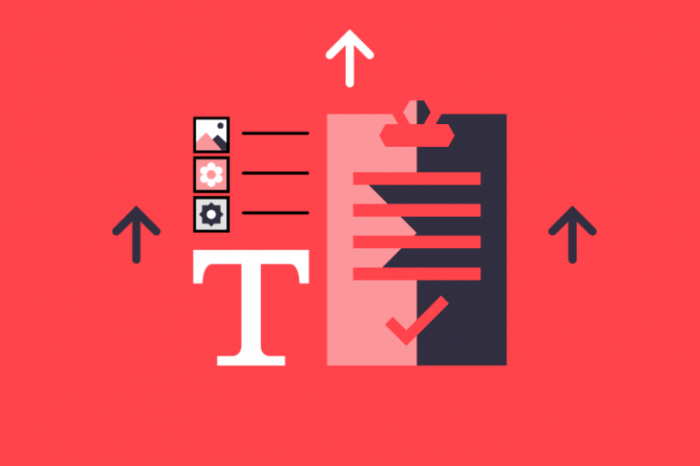Improving Content Readability sets the stage for a more engaging user experience, focusing on techniques and visual elements that captivate and inform. Dive into the world of content enhancement with a twist of creativity and insight.
From the importance of short paragraphs to utilizing visual elements, this discussion explores the key strategies to make your content shine.
Introduction to Content Readability Improvement

Content readability refers to how easily a piece of content can be read and understood by the audience. It encompasses factors such as sentence structure, vocabulary choice, and overall organization of the text. Improving content readability is crucial as it directly impacts the user experience on a website or platform. When content is difficult to read, users are more likely to bounce off the page, leading to higher bounce rates and lower engagement levels.
Impact of Poor Readability
Poor readability can have various negative effects on user experience. For example, if sentences are too complex or filled with jargon, users may struggle to comprehend the message being conveyed. This can result in frustration and a lack of trust in the content or brand. Additionally, if the text is not well-organized with clear headings and subheadings, users may have difficulty navigating the content and finding the information they are looking for. Overall, poor readability can lead to a negative perception of the website or platform and deter users from returning in the future.
Techniques for Improving Content Readability

When it comes to making your content easy on the eyes, shorter is sweeter! Short paragraphs and sentences help break down information into bite-sized chunks that readers can digest easily. Ain’t nobody got time for long, rambling sentences!
Importance of Headings and Subheadings
Headings and subheadings are like the GPS for your content. They guide your readers through the text, helping them navigate and find what they’re looking for faster than you can say ‘readability.’ Plus, they make your content look organized and sleek.
Tips on Using Bullet Points and Numbered Lists Effectively
Let’s talk lists, baby! Bullet points and numbered lists are like the cherry on top of your content sundae. They make important points stand out, break up information into digestible chunks, and keep your readers engaged. Who doesn’t love a good list?
Role of White Space in Enhancing Readability, Improving Content Readability
White space is like the breathing room for your content. It gives your readers’ eyes a break, helps important elements stand out, and makes your content look clean and polished. Don’t underestimate the power of white space, my friend!
Utilizing Visual Elements for Readability: Improving Content Readability
Visual elements play a crucial role in enhancing the readability of content by breaking up text and making information more digestible for readers. Images, infographics, charts, and graphs are all effective tools that can improve comprehension and engagement with the content.
Images to Break Up Text
Images are a great way to break up long blocks of text and add visual interest to the content. They can help readers stay engaged and understand complex concepts more easily. By incorporating relevant images throughout the text, you can create a more visually appealing and reader-friendly experience.
Infographics for Simplifying Information
Infographics are powerful visual tools that can simplify complex information and make it easier to understand. By combining text, images, and data in a visually appealing way, infographics can convey information quickly and effectively. They are especially useful for presenting statistics, trends, and comparisons in a clear and engaging manner.
Benefits of Using Charts and Graphs
Charts and graphs are valuable tools for visualizing data and highlighting key trends or insights. By presenting data in a visual format, such as bar graphs, pie charts, or line graphs, you can help readers interpret complex information more easily. Charts and graphs can also make it easier to identify patterns, relationships, and outliers in the data, leading to a deeper understanding of the content.
Readability Tools and Resources
In the world of online content creation, readability plays a crucial role in engaging readers. To help improve the readability of your content, there are various tools and resources available that can analyze your text and provide valuable insights on how to enhance it.
One popular readability tool is Hemingway Editor, which highlights lengthy, complex sentences, passive voice, and hard-to-read phrases. By using this tool, you can simplify your writing and make it more accessible to a wider audience.
Another helpful tool is Yoast , which not only focuses on optimization but also provides readability analysis. It gives you suggestions on sentence length, subheading distribution, and overall readability of your content.
Readability scores are calculated based on factors like sentence length, syllable count, and the use of passive voice. These tools assign a grade level or reading ease score to your content, indicating how easy or difficult it is to read.
Readability Scores and Analysis
- Readability scores are calculated using formulas that take into account the average number of words per sentence and syllables per word.
- For example, the Flesch-Kincaid Grade Level score measures the readability of a text by analyzing the average number of syllables per word and words per sentence.
- Another common metric is the Flesch Reading Ease score, which rates text on a 100-point scale based on how easy it is to read. Higher scores indicate easier readability.
